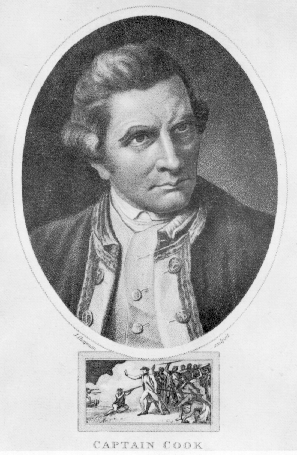 |
 |
 |
 |

Cook joined the Royal Navy in 1755, and within four years was a master of a ship. He commanded the Mercury in 1759, which he sailed to Canada and up the St. Lawrence River. In 1763, he led a number of surveying missions on the coast of Labrador, Newfoundland, and Nova Scotia.
Cook was long interested in astronomy, publishing some of his findings in the Transactions of the Royal Society. In 1768 the Society called on him to lead a voyage to Tahiti to establish an astronomical observatory, since the southern hemisphere would allow a better view of the planet Venus. Cook was accompanied on the exhibition by several botanists, including Sir Joseph Banks.
In 1770 he arrived in the terra australis incognita, the "unknown land in the south," now known as Australia. There he continued his scientific research. The wealth of plant species his team discovered led him to name his point of landing Botany Bay. He returned to England in 1771. After another successful expedition to the South Pacific, he was elected to the Royal Society.
In 1776, Cook set off on his last voyage, on which he discovered Christmas Island and the Hawaiian islands (which he called the Sandwich Islands). From Hawaii he sailed to Vancouver, through the Bering Strait, and into the Arctic Ocean in search of a Northern Passage, but was unsuccessful. Cook returned to Hawaii, where he was killed in 1779 by natives of the islands.